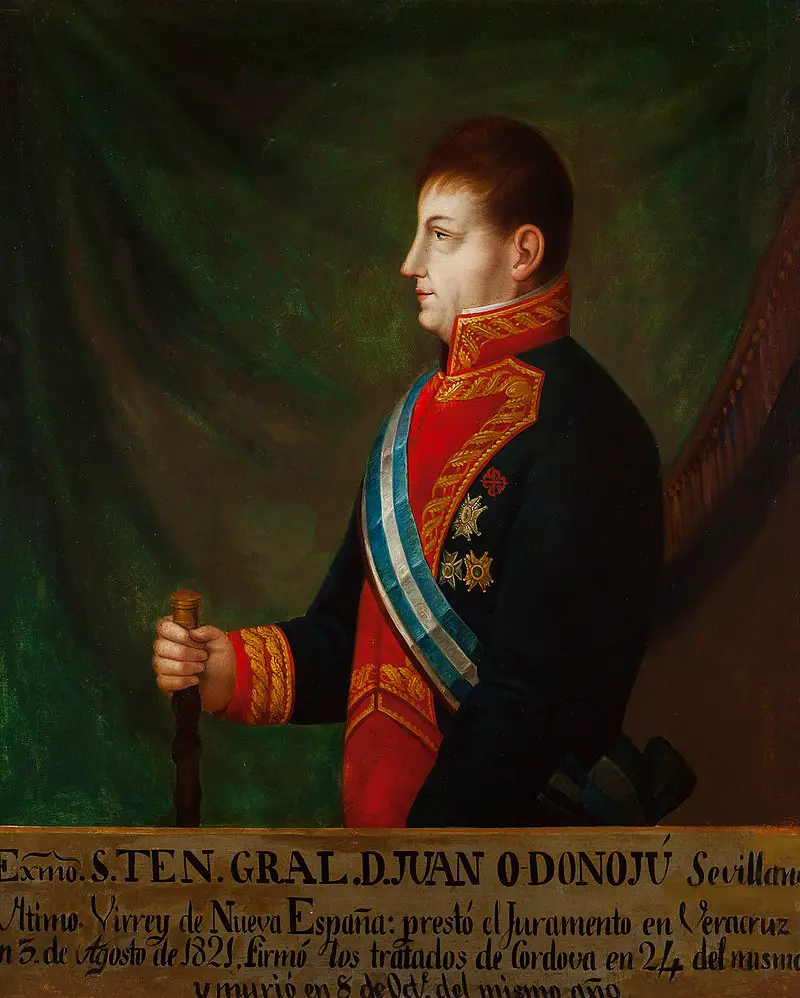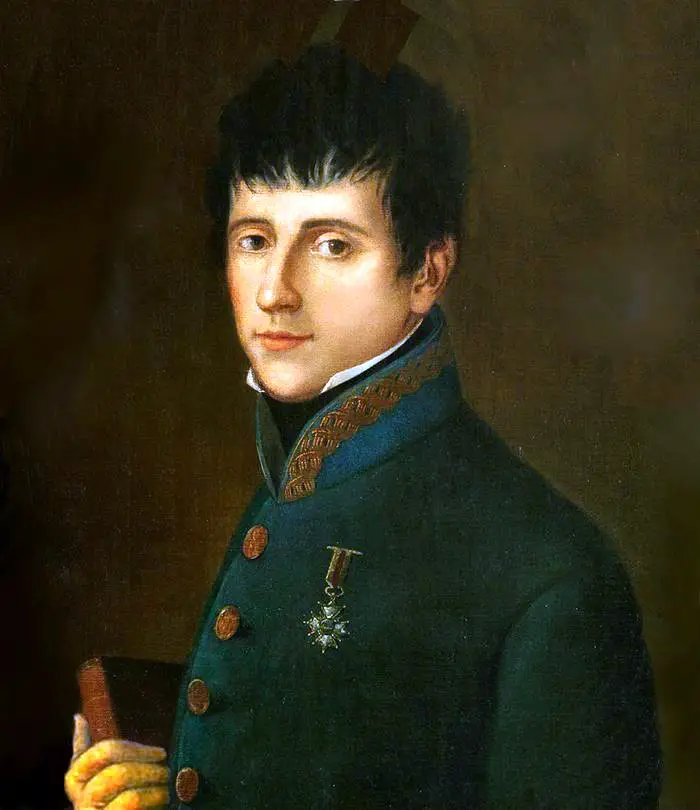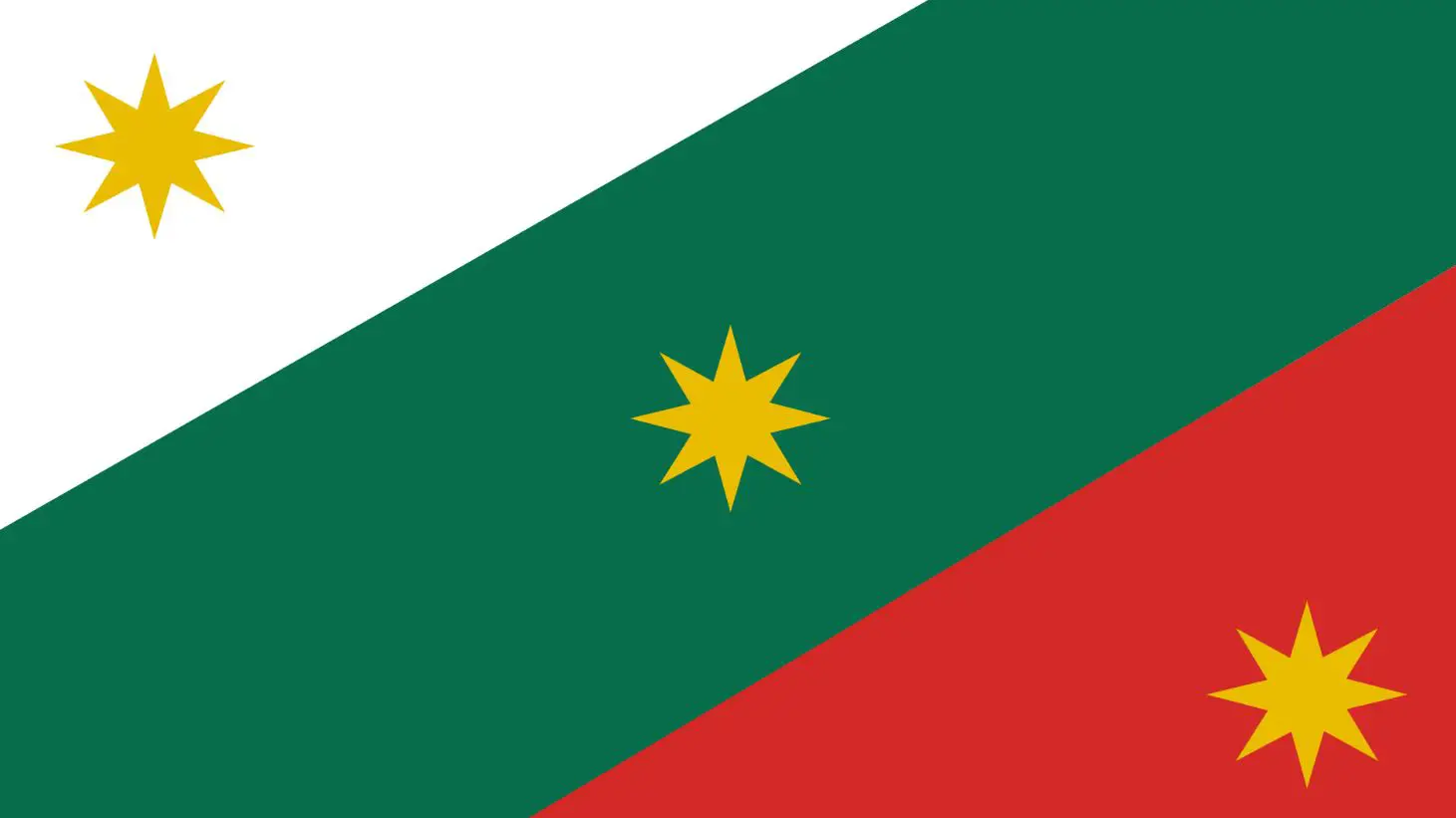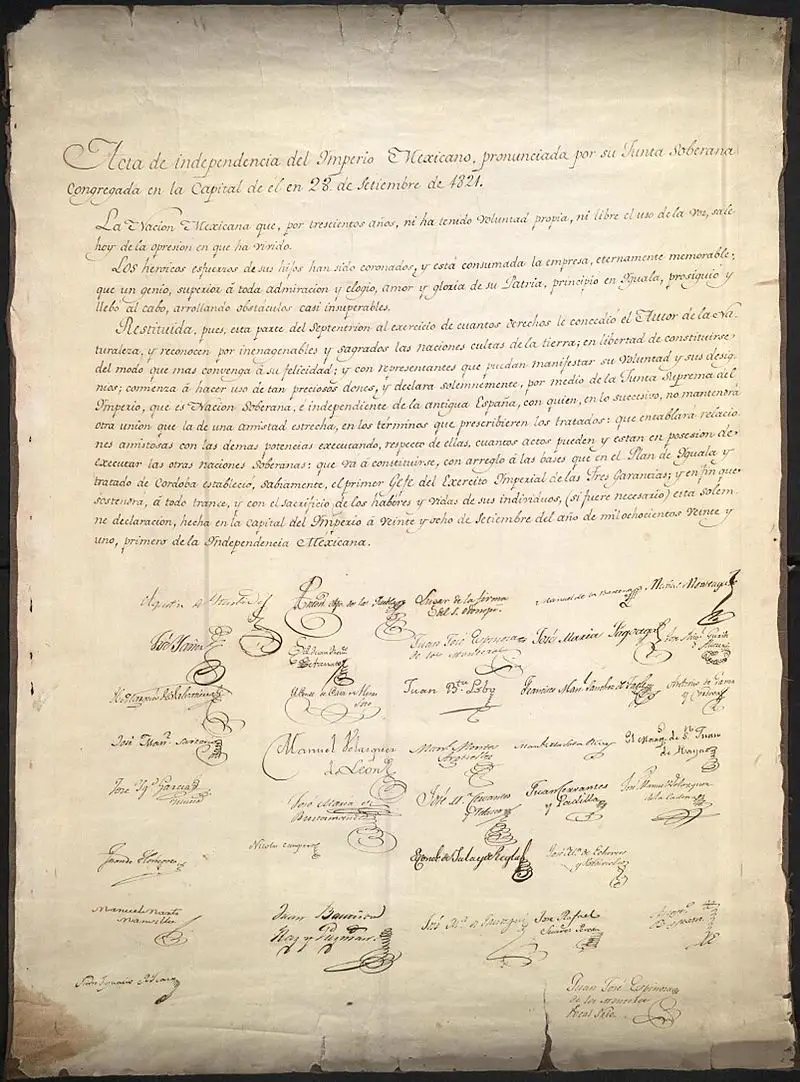Podcast: Play in new window | Download
Subscribe: Apple Podcasts | RSS
 The date was July 21, 1821. The Irish-Spaniard Juan O’Donojú y O’Ryan landed at the tropical port of Veracruz on the Gulf of Mexico. With the authority vested in him by King Ferdinand VII of Spain and the Spanish legislature, the Cortes Generales, O’Donojú assumed the role of Viceroy of New Spain with the title “Jefe Politico Superior,” or loosely in English, “Top Political Chief.” The career military man found himself in a strange country wracked with serious problems. For over ten years the future country of Mexico had been torn apart by rebel uprisings and separatist movements. The government in Spain was confident that they had sent the right man to Mexico to help put an end to the widespread unrest and were certain that O’Donojú would bring one of their most prized overseas possessions completely back into the fold of the Spanish Empire. The middle-aged Irish army officer had an incredible task to complete, but he was up to the job. Little did he know, he would go down in the history books as the very last viceroy of Mexico.
The date was July 21, 1821. The Irish-Spaniard Juan O’Donojú y O’Ryan landed at the tropical port of Veracruz on the Gulf of Mexico. With the authority vested in him by King Ferdinand VII of Spain and the Spanish legislature, the Cortes Generales, O’Donojú assumed the role of Viceroy of New Spain with the title “Jefe Politico Superior,” or loosely in English, “Top Political Chief.” The career military man found himself in a strange country wracked with serious problems. For over ten years the future country of Mexico had been torn apart by rebel uprisings and separatist movements. The government in Spain was confident that they had sent the right man to Mexico to help put an end to the widespread unrest and were certain that O’Donojú would bring one of their most prized overseas possessions completely back into the fold of the Spanish Empire. The middle-aged Irish army officer had an incredible task to complete, but he was up to the job. Little did he know, he would go down in the history books as the very last viceroy of Mexico.
Born in Seville on July 30, 1762, Juan O’Donojú y O’Ryan was the son of Irish parents who emigrated to Spain. At that time there was a thriving Irish expatriate community in Spain, with schools for Irish children, community organizations, etc. O’Donojú grew up in two cultures and spoke fluent English and Spanish. As a young man he trained for military service. In 1808 when O’Donojú was almost 46 years old, Napoleon invaded Spain and started what historians call the Peninsular War. This would last until 1814 when Spain and France signed the Treaty of Paris to formally end hostilities. During the conflict, the Irish-Spanish army officer played an important role. He served as a translator between the Spanish generals and the British commander in Spain, Lieutenant-General Sir Arthur Wellesley who would later become the first Duke of Wellington. In 1814 O’Donojú was named Spanish Minister of War. Later, he was the personal assistant, or aide-de-camp, to King Ferdinand VII.
 Spain slowly returned to the old order after Napoleon left the Iberian Peninsula. King Ferdinand VII became an absolute monarch despite the fact that in 1812 the Spanish government in exile crafted a constitution that limited the king’s power and gave more rights and powers to the people. Juan O’Donojú’s close friend, Colonel Rafael del Riego y Nuñez initiated a military coup in January of 1820 and pledged that he and his followers would follow the 1812 Spanish Constitution. The king gave in to the demands of the popular uprising and for three years Spain was governed under what was termed the Trienio Liberal, or in English, the Liberal Triennium. When Riego and his followers gained control of the government their regency was little different from the king’s absolute rule. During this time Juan O’Donojú’s power increased. He had been secretly involved in Freemasonry which had been persecuted by Catholic Church officials throughout most of Spain’s history. Under the rule of the Liberal Triennium, a reverse occurred. The Catholic Church was severely sanctioned, and Spain saw an end to the Inquisition and an expulsion of the Jesuit Order. Without Church persecution Freemasons were allowed to meet openly and recruit followers more aggressively. Thus, many involved with Freemasonry rose to positions of power in the government. As a high-ranking member of the masons, O’Donojú found himself well-connected during the Triennium’s regency. This is how he became an important part of the plan to help put down rebellions in Spain’s overseas territories and to subjugate popular uprisings in Mexico, specifically.
Spain slowly returned to the old order after Napoleon left the Iberian Peninsula. King Ferdinand VII became an absolute monarch despite the fact that in 1812 the Spanish government in exile crafted a constitution that limited the king’s power and gave more rights and powers to the people. Juan O’Donojú’s close friend, Colonel Rafael del Riego y Nuñez initiated a military coup in January of 1820 and pledged that he and his followers would follow the 1812 Spanish Constitution. The king gave in to the demands of the popular uprising and for three years Spain was governed under what was termed the Trienio Liberal, or in English, the Liberal Triennium. When Riego and his followers gained control of the government their regency was little different from the king’s absolute rule. During this time Juan O’Donojú’s power increased. He had been secretly involved in Freemasonry which had been persecuted by Catholic Church officials throughout most of Spain’s history. Under the rule of the Liberal Triennium, a reverse occurred. The Catholic Church was severely sanctioned, and Spain saw an end to the Inquisition and an expulsion of the Jesuit Order. Without Church persecution Freemasons were allowed to meet openly and recruit followers more aggressively. Thus, many involved with Freemasonry rose to positions of power in the government. As a high-ranking member of the masons, O’Donojú found himself well-connected during the Triennium’s regency. This is how he became an important part of the plan to help put down rebellions in Spain’s overseas territories and to subjugate popular uprisings in Mexico, specifically.
Juan O’Donojú landed on Mexican shores at Veracruz on July 21, 1821 and assumed the office of Jefe Politico Superior, thus becoming the acting viceroy. He encountered a fractured country that had been in various states of rebellion for over 10 years. Only Mexico City, Veracruz and Acapulco were still loyal to the Spanish Crown. Many other parts of New Spain were under strictly local control or were ruled by rebel military commanders or juntas. The most powerful rebel military leader in the land at the time was Agustin de Iturbide who would later play an important role in the new nation of Mexico. Even though O’Donojú proclaimed support for extending the 1812 Spanish Constitution to New Spain, thus granting the Mexicans more rights and autonomy, the majority of the Mexican provinces in rebellion against the Crown wanted no part of it. They were looking for complete independence and home-rule under a document crafted earlier in 1821 called the Plan de Iguala.
Mexican rebel leaders Agustin de Iturbide and Vicente Guerrero drafted the Plan de Iguala which was also called the Act of Independence of North America or the Plan of the Three Guarantees. The three guarantees referenced in the alternate title of the plan often times referred to “Religion, Independence and Unity,” were, specifically:
- That Roman Catholicism would be the official religion of the new country
2. That the form of government for Mexico would be a constitutional monarchy
3. That all citizens would have equal rights both politically and socially
 The last point in the plan sought to abolish the centuries-old class system based on blood quanta and shades of skin tone, and included all people currently living in the territory formerly known as New Spain. The preamble of the Plan de Iguala refers to, “Americans under which term are included not only those born in America, but Europeans, Africans and Asians who reside in it.” Article 12 of the Plan de Iguala further states that, “All the inhabitants of New Spain, without any distinction between Europeans, Africans, nor Indians, are citizens of this Monarchy with option to all employment depending on their merit and virtues.” Most rebel soldiers in the territory of New Spain, a total number of over 15,000, belonged to what was called The Army of the Three Guarantees led by Plan de Iguala’s authors, Iturbide and Guerrero. O’Donojú realized that the united opposition force was formidable, so he asked to meet with Iturbide. They set up a meeting in the city of Córdoba in the modern Mexican state of Veracruz. O’Donujú was accompanied by a young 27-year-old Colonel by the name of Antonio López de Santa Anna, the future president of Mexico several times over and known for his victory at the Alamo in Texas.
The last point in the plan sought to abolish the centuries-old class system based on blood quanta and shades of skin tone, and included all people currently living in the territory formerly known as New Spain. The preamble of the Plan de Iguala refers to, “Americans under which term are included not only those born in America, but Europeans, Africans and Asians who reside in it.” Article 12 of the Plan de Iguala further states that, “All the inhabitants of New Spain, without any distinction between Europeans, Africans, nor Indians, are citizens of this Monarchy with option to all employment depending on their merit and virtues.” Most rebel soldiers in the territory of New Spain, a total number of over 15,000, belonged to what was called The Army of the Three Guarantees led by Plan de Iguala’s authors, Iturbide and Guerrero. O’Donojú realized that the united opposition force was formidable, so he asked to meet with Iturbide. They set up a meeting in the city of Córdoba in the modern Mexican state of Veracruz. O’Donujú was accompanied by a young 27-year-old Colonel by the name of Antonio López de Santa Anna, the future president of Mexico several times over and known for his victory at the Alamo in Texas.
Juan O’Donojú as acting viceroy knew he faced impossible odds to keep Mexico within the Spanish Empire. He still had a mission to accomplish and he thought he found a way to give the Mexicans their independence while still keeping them subjects of the Spanish king. O’Donojú proposed a new document which amended the Plan de Iguala, later called the Treaty of Córdoba. In the treaty the new nation of Mexico was to be, “monarchical, constitutional and moderate.” Who would be the king of the new country? According to the treaty it would be the current king of Spain, and if he was unable to accept the crown in person and take the oath of office in Mexico City, then the crown would be offered to a succession of male relatives. They would first start with the king’s brothers, Charles and Francis, and if they were not interested or could not make it to Mexico, the crown would be offered to King Ferdinand’s cousin, an archduke from Austria named Charles. If no nobleman related to the king of Spain on the list wanted to accept the Crown of Mexico, the crown would pass to someone whom the newly formed Mexican legislature called the  cortes would select. There was nothing in the treaty that said the monarch had to be European at all. With the signing of the Treaty of Córdoba O’Donojú thought he had won a victory by giving the Mexicans a great degree of autonomy while still having the Spanish king rule over them from far away, if in name only. When news of the treaty reached Spain, the Spanish authorities rejected it and claimed that O’Donojú had no authority to make such a deal with the rebels. After the treaty was signed, though, the sentiments in Spain didn’t matter much to the 15,000 plus troops in the Army of the Three Guarantees or to the majority of the people living in New Spain. Led by Iturbide and Guerrero, the army marched to Mexico City and arrived on September 27, 1821. The next day, The Declaration of Independence of the Mexican Empire was drafted at the National Palace. Ironically, even though O’Donujú was still the acting viceroy of New Spain, he signed the Mexican Declaration of Independence alongside the rebels. There were some royalist holdouts in some plazas in Mexico City, the San Diego Castle in Acapulco and much of the port of Veracruz. O’Donujú used his influence to get most of the last royalists to surrender and leave the country with minimal bloodshed. Despite the nearly complete control over the country by the Guerrero and Iturbide forces along with a treaty signed by one of their own representatives, Spain refused to recognize Mexico’s independence until some 15 years later.
cortes would select. There was nothing in the treaty that said the monarch had to be European at all. With the signing of the Treaty of Córdoba O’Donojú thought he had won a victory by giving the Mexicans a great degree of autonomy while still having the Spanish king rule over them from far away, if in name only. When news of the treaty reached Spain, the Spanish authorities rejected it and claimed that O’Donojú had no authority to make such a deal with the rebels. After the treaty was signed, though, the sentiments in Spain didn’t matter much to the 15,000 plus troops in the Army of the Three Guarantees or to the majority of the people living in New Spain. Led by Iturbide and Guerrero, the army marched to Mexico City and arrived on September 27, 1821. The next day, The Declaration of Independence of the Mexican Empire was drafted at the National Palace. Ironically, even though O’Donujú was still the acting viceroy of New Spain, he signed the Mexican Declaration of Independence alongside the rebels. There were some royalist holdouts in some plazas in Mexico City, the San Diego Castle in Acapulco and much of the port of Veracruz. O’Donujú used his influence to get most of the last royalists to surrender and leave the country with minimal bloodshed. Despite the nearly complete control over the country by the Guerrero and Iturbide forces along with a treaty signed by one of their own representatives, Spain refused to recognize Mexico’s independence until some 15 years later.
After the Declaration of Independence of the Mexican Empire on September 28, 1821, whatever happened to the last viceroy? What was to be the fate of the Irish-Spaniard Juan O’Donojú y O’Ryan? Together with thirty-three others, O’Donojú was a member of the Mexican Provisional Governing Junta, headed by Agustin Iturbide. He was to play a key role in the transition of Mexico to an Empire ruled by a native-born Emperor, but he died of a lung condition called pleurisy on October 8, 1821 in Mexico City less than 2 weeks after he signed the Mexican Declaration of Independence. Some scholars believe that since O’Donojú probably had designs on having the crown of Mexico for himself, and he had wealthy backers and the Freemasons behind him in Europe, that someone poisoned him to make way for Agustin Iturbide to rule Mexico. Juan O’Donoju’s remains were interred with the honors of a viceroy in the vault of the Altar of Kings in the Cathedral of Mexico. We may never know what really happened to this extraordinary and enigmatic man.
REFERENCES
O’Fogartaigh, Seamus. “Hiberno-Mexican Historical Links.” In, Irish Roots Magazine, No 58, 2006 Second Quarter.
Wikipedia
